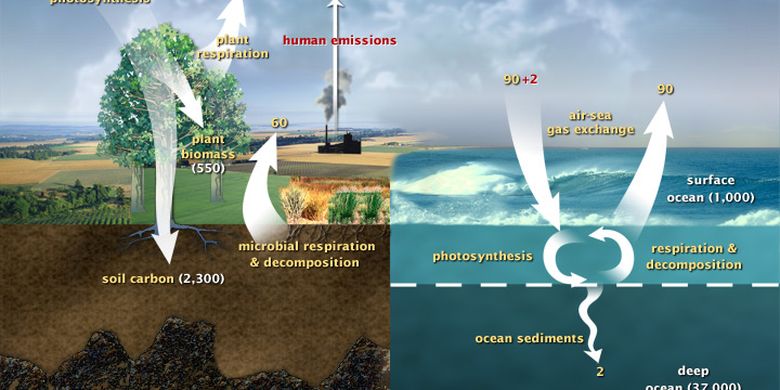KOMPAS.com – carbon cycle carried out biologically by living things through photosynthesis and respiration. However, the earth also does carbon cycle in a slower flow through geological carbon cycle.
Geological carbon cycle is a biogeochemical cycle that recycles carbon in the earth over a long period of time. Thus, the geological carbon cycle is often referred to as the long carbon cycle.
Reported from NOAA’s National Ocean Service, most of the carbon is stored in rocks and sediments and through long geological carbon cycles. Here is an explanation of how the geological carbon cycle occurs on earth!
Formed carbon rock from the remains of dead organisms
The tissues and organs of living things are made of carbon. That is why organisms consume carbon throughout their lives. When an organism dies, carbon is still contained in its body.
Read also: How Does the Carbon Cycle Occur?
Reported from Khan Academythe remains of dead organisms that have sunk into the seafloor sediments.
These sediments are filled with carbon and over time turn into rocks full of carbon and fossil fuels.
For example, limestone, coal, petroleum, and natural gas. The remains of living things are estimated to make up about 20 percent of rock containing carbon.
The formation of carbon rock from rock weathering
Weathering of rocks on land releases calcium ions. Calcium ions are then carried by rivers into the oceans and meet with bicarbonate ions. Bicarbonate ions are formed from atmospheric carbon (CO2) that enters seawater.
The two ions then react and form calcium carbonate deposits on the seabed. Over time, these sediments turn into carbonaceous rocks such as limestone and metamorphic rocks.
Read also: Sedimentation: Definition and Types
These rocks trap carbon for millions of years. Carbon in rocks follows the shift of the oceanic plates to the subduction zone. Where magma heats the rock and releases carbon dioxide. Thus, the carbon returns to the atmosphere.
–
–


